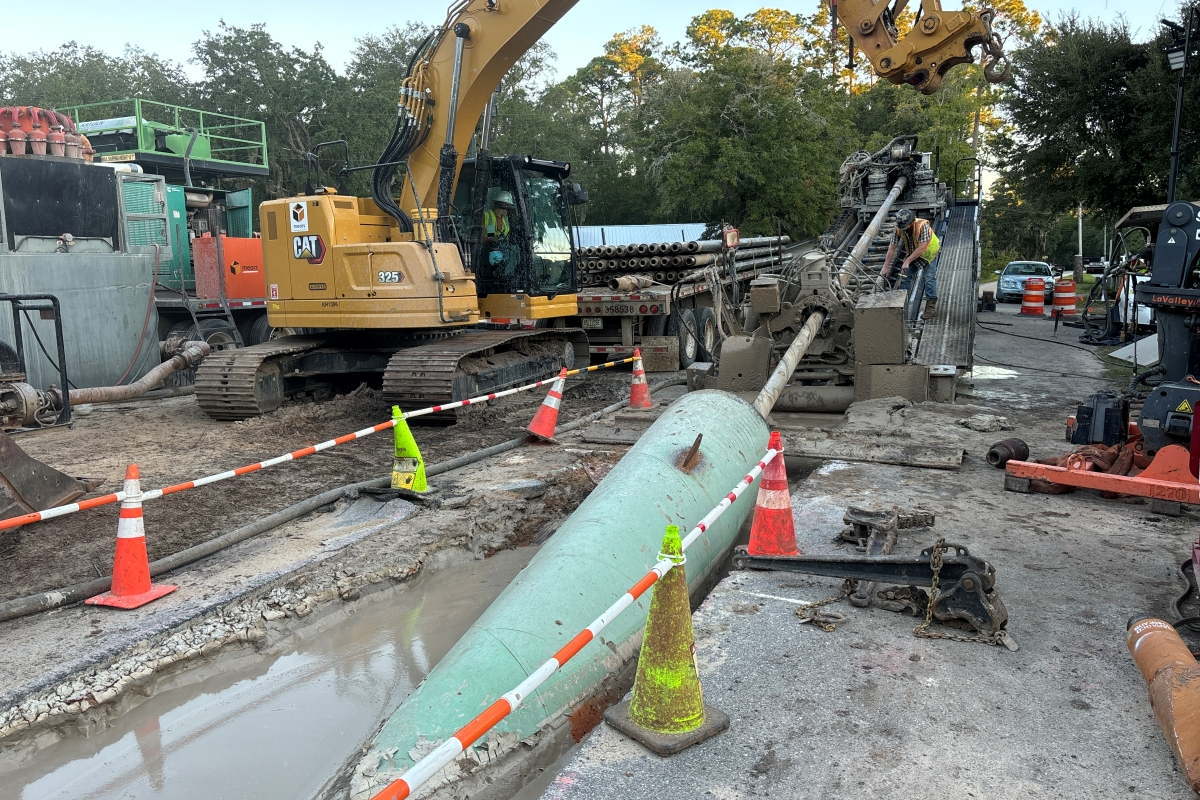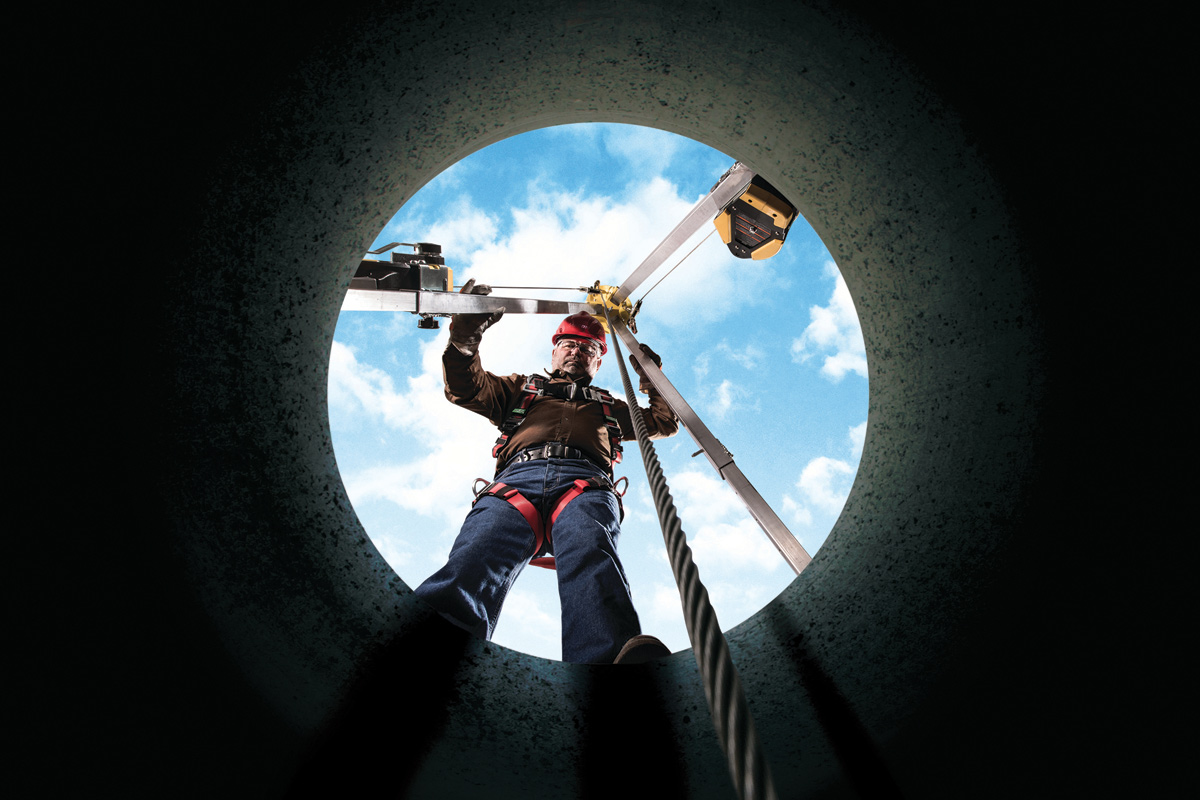
Pilot Tube Method Put to the Test in Kentucky
January 21, 2016
When MAC Construction and Excavating, of New Albany, Ind., faced the challenge of being more than 30 ft deep and needing to cross a 175-ft wide branch off of the Ohio River for a 16-in. sewer, they knew who to call — the contractor that it has almost two miles of pilot tube experience — Midwest Mole Inc.The project known as the Shadow Wood WWTP Elimination for the Louisville and Jefferson County Metropolitan Sewer District (MSD) was designed to decommission two pump stations and the Shadow Wood Wastewater Treatment Plant. To accomplish this, a 16-in. gravity sewer had to be installed under Harrods Creek, which not only is a large creek that empties into the Ohio River, but also is a boating channel leading into a marina.
Along with soil borings that were provided for the contract, MAC Construction just completed an 80-ft deep excavation near the proposed main working pit for a large pump station on a separate contract it had for Louisville MSD. Per the test bores, the soils, at the depths of the proposed crossing under Harrods Creek, consisted of a soft gray silt on the south side of Harrods Creek and a very dense silty sand on the north side. During the installation of the 80-ft deep shaft for the pump station, flowing soils saturated with water were found in the upper levels of the excavation but the soils at the elevations of the proposed trenchless crossing were relatively dry.
 Midwest Mole CEO Dan Liotti and foreman Jason Smith believed that the pilot tube method (PTM) could be used in lieu of microtunneling if the soils at the depths of the crossing were not flowing sands and water under high water pressure. Smith, who completed the third largest PTM project in the United States for MAC Construction back in 2012, had good experience using this method with flowing soils with a relatively low water head of 36 to 54 in. To be absolutely sure the PTM could be used, Midwest Mole took its own test bore rig to the site so Liotti could see and feel the ground first hand. It was confirmed that after drilling through very wet soils, the soils underlying the wet soils were more stable and would allow for the use of PTM.
Midwest Mole CEO Dan Liotti and foreman Jason Smith believed that the pilot tube method (PTM) could be used in lieu of microtunneling if the soils at the depths of the crossing were not flowing sands and water under high water pressure. Smith, who completed the third largest PTM project in the United States for MAC Construction back in 2012, had good experience using this method with flowing soils with a relatively low water head of 36 to 54 in. To be absolutely sure the PTM could be used, Midwest Mole took its own test bore rig to the site so Liotti could see and feel the ground first hand. It was confirmed that after drilling through very wet soils, the soils underlying the wet soils were more stable and would allow for the use of PTM.Midwest Mole worked closely with Jason Holden, of Akkerman, to supply the 24-in. Akkerman Powered Cutting Head (PCH) outfitted with a double flight auger to provide extra resistance in flowing soils. Midwest Mole utilized its own Akkerman 308 GBM and outfitted it to a jacking track that would allow for the installation of 20-ft lengths of 24-in. Permalok casing.
MAC Construction installed circular steel sheeted shafts using concrete ring beams for the working pits. Also, for added insurance to prevent the upper level flowing soils from entering the pit, an additional 60-in. wide row of sheeting was installed on the outside of the shaft to allow for the installation of the entrance and reception seal along with cutting out the steel sheet piling. Once onsite, the crews went to work engineering line and grade between the pits and setting up the equipment in the shaft. After the jacking track was set up on line and grade, the soils outside the shaft were stabilized using chemical grouts to allow for cutting out the sheet piling. After stabilization of the soils, pit seals were welded in place and a couple test holes were cut out to make sure the stabilization did its job and the sheeting was cut out.
With all systems go, it was time to launch the pilot tubes and pull the second row of sheeting. After successful installation of the pilot tubes, the 11-in. auger casings were installed without incident and it was time to launch the Akkerman 24-in. PCH. Once Midwest Mole started with the PCH, it was decided to add a second shift and run around the clock to help keep jacking pressures down and keep the pipe moving under Harrods Creek.
Smith and the crew were very happy to see the that the PCH made it to the receiving pit knowing that there was only 9-ft separation from the bottom of Harrods Creek to the top of the 24-in. casing. While there was some difficulty that had to be overcome bringing the PCH into the receiving pit due to a small misalignment of the seal, the crossing was a success and the 16-in. DIP was installed inside the 24-in. casing and grouted into place.
Dan Liotti, P.E., is CEO and Jason Smith is foreman of Midwest Mole.




